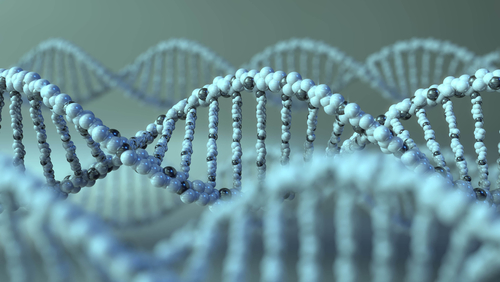Three new mutations in three of four babies with Gaucher disease type 2 were reported in a Turkish study, further illustrating variability of this disease — even in Gaucher patients with the same subtype, the investigators said.
The research, “Four Gaucher disease type II patients with three novel mutations: a single centre experience from Turkey,” appeared in the journal Metabolic Brain Disease.
Gaucher type 2 is an acute and severe form of the disease, which presents in early infancy with significant central nervous system (CNS) involvement, enlargement of the liver and spleen, bone marrow insufficiency causing anemia and low platelet count, interstitial lung disease, and skin manifestations.
Diagnosis is usually based on levels of the glucosylceramidase enzyme, which is deficient in these patients, together with sequencing of the GBA gene, which contains the information for making glucosylceramidase.
The researchers reported the cases of four patients whose disease was caused by novel mutations. The first case involved a 6-week-old boy with neurologic problems, an enlarged spleen and liver, and clolestasis — a liver disease marked by a reduced or blocked flow of bile from liver cells. The baby’s parents were a consanguineous (blood-related) couple, and he required mechanical ventilation soon after birth.
Family history revealed a sister and brother with similar symptoms had died at very young ages. The infant boy’s physical examination also found malnutrition, irritability, skin problems, and edema, or swelling caused by accumulation of fluid in tissues. He also had low muscle tone with neck hyperextension.
Laboratory assessments showed mildly reduced platelet counts, elevated liver enzymes, and mild cholestasis. Abnormal levels of fluid build-up in the abdomen (ascites) and delayed formation of myelin, the protective layer of nerve fibers, were also detected.
Molecular analysis revealed low glucosylceramidase activity and a known mutation in the GBA gene. The baby died of respiratory and cardiac insufficiency at 2 months of age.
The second case was the first child of another consanguineous couple, who would also die at age 2 months despite continuous respiratory ventilation. Physical examination revealed collodion baby features — a form of skin disorder where a baby is encased in a shiny sheet of skin cells at birth — joint contractures, enlarged spleen and liver, and hernia in both groins.
The baby showed widespread skin peeling on the third day of life, and hydrocephalus, or accumulation of cerebrospinal fluid in the brain. Molecular assessment found a new homozygous mutation in the GBA gene. The parents were also carriers of this mutation; homozygous mutations are in both copies of a gene with one copy inherited from each parent.
The third case described a 9-month-old boy with evidence of neurologic impairment, abdominal swelling, and failure to thrive. The baby was also born to consanguineous parents. He was hospitalized for dehydration and cholestasis at 20 days old, and was found to have an enlarged spleen and liver at 6 months old.
He later showed severe growth failure, irritability, low muscle tone, and skin problems. Laboratory assessments found severe anemia and low platelet levels. The boy’s spleen was removed in emergency surgery because of gastrointestinal bleeding. Molecular tests also revealed low glucosylceramidase activity and another novel homozygous mutation in GBA. He died at 18 months of age due to pneumonia.
The fourth case involved a 2-month-old boy born to nonconsanguineous parents. He also had abdominal swelling at hospital admission. Physical examination found only an enlarged spleen and liver, and the baby was able to achieve appropriate developmental milestones.
Low glucosylceramidase activity in this child led to a first diagnosis of Gaucher disease type 1, the most common form of GD and the only one that does not affect the CNS. The boy was started on enzyme replacement therapy. He was subsequently found to have a compound heterozygous mutation consisting of one known and one new mutation, which were also observed in both of his parents.
At age 8 months, the boy showed horizontal gaze palsy, or an inability to move the eyes horizontally. Such evidence of neurological problems with findings only an enlarged liver and spleen contrasts with findings typical to GD type 2, the investigators noted.
As no other neurological problems were detected, the clinicians changed the baby’s GD diagnosis to type 3 and increased the dose of his enzyme replacement therapy. But when he was 1-year-old, the boy developed dystonia, or repetitive muscle contractions, and an abnormal neck posture, leading to a diagnosis of atypical GD type 2. Treatment was stopped and the boy died of sepsis at 14 months old.
“As there is … heterogeneity between the subtypes and even in the same type of GD, and there is a limited number of [GD type 2] patients reported from all over the world, it is very important to describe the natural history of clinical features and all genotypes associated with [GD type 2],” the researchers wrote.
“We also want to emphasize that infantile Gaucher patients should be checked more carefully and frequently for neurologic deterioration,” they added.


